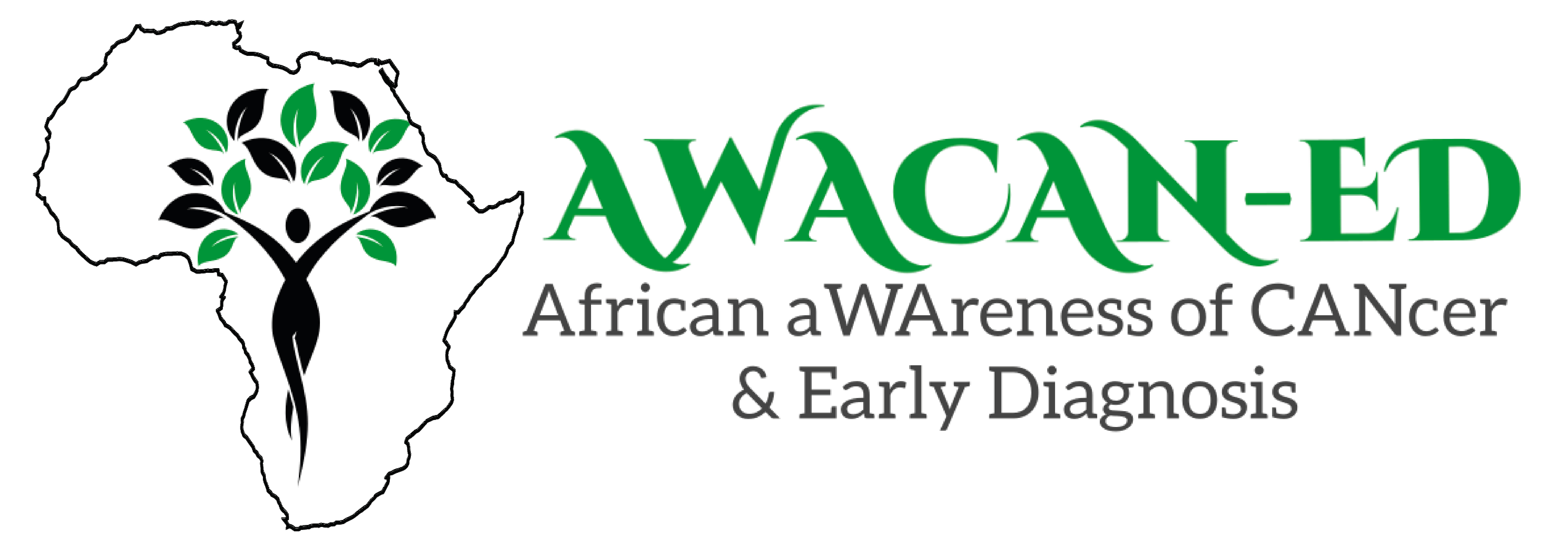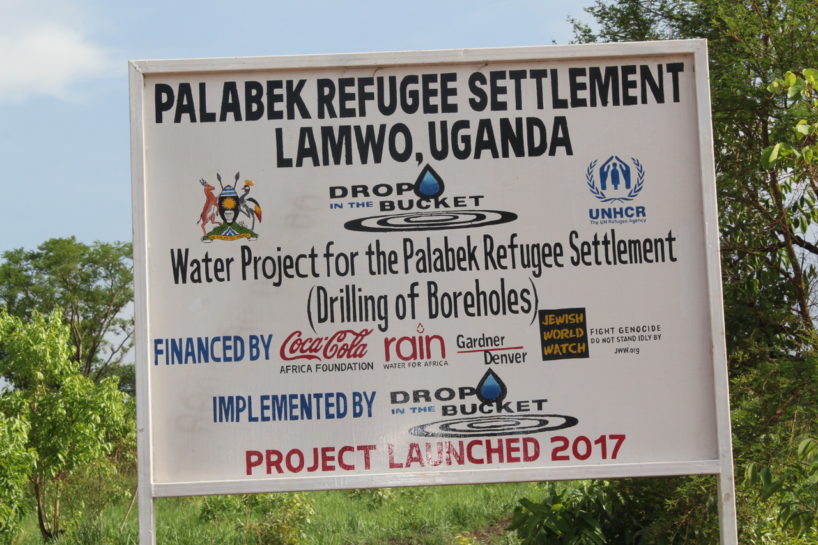Knowledge of cervical cancer risk factors and symptoms among women in a refugee settlement: reflections from a cross sectional study in Northern Uganda – Winnie Adoch, MPH
In this blog article, Winnie Adoch reflects on her research work assessing knowledge of cervical cancer risk factors and symptoms among women in a refugee settlement in Northern Uganda, the findings of which have been recently published. The study used an adapted version of the AWACAN tool to collect data.
Many women in refugee settings with cervical cancer do not know what to attribute it to. They bleed, have vaginal discharge, abdominal pains and yet help is far away. Many have resorted to taking pain killers and using traditional herbs, only seeking help when the disease has advanced with poor treatment outcomes. Time and resources spent on treatment have continued to have adverse psychological and economic impacts on these women and their families.
Cervical cancer poses a significant burden to public health; worldwide, there were 569,847 new cases of cervical cancer diagnosed in 2018; and there were 311,365 cancer deaths. Cancer disproportionately affects the poorer populations of the world. Up to 85% of the new cases and deaths from cervical cancer that occurred in 2018 were in the low- and middle-income countries (LMICs). Patients in these countries are often diagnosed late with advanced stage cancers at the time of diagnosis. Cancer outcomes are particularly poorer among vulnerable populations like refugees in LMICs including those in sub-Saharan Africa. Poor access to appropriate health information and other psychosocial and economic factors potentially undermines awareness of refugee women regarding cancer risk factors and symptoms. To understand the influence of these factors, we assessed knowledge of cervical cancer risk factors and symptoms among a large population of refugee women in Palabek refugee settlement, northern Uganda. We are convinced that the data can inform targeted interventions on prevention, risk reduction behaviours and early detection of symptomatic cervical cancer among the refugee women.
Palabek refugee settlement is one of the newest refugee settlements in Uganda established in April 2017. It is divided into seven Zones, which are subdivided into 35 blocks. There are four health centers in this settlement which host an estimated 60,000 refugees, majority of whom are female and children.
To achieve our objectives, we conducted a cross-sectional survey among women aged 18 years and above living in this settlement. We used a multilevel sampling approach to select the study participants. A standardized pretested questionnaire adapted from the African Women Awareness of Cancer (AWACAN) tool (www.awacan.online) was used to collect data. To ensure validity, we used the Acoli version of the AWACAN tool for this study. The majority of the population in this settlement speak Acoli language. As part of the quality control procedure, experienced research assistants with bachelor degree-level of education were selected and trained on the study data collection tool, objectives, consenting procedures, cervical cancer risk factors and symptoms, and a brief background on cervical cancer as a disease.
The analysis was guided by knowledge scores which we developed based on known epidemiologic risk factors and symptoms for cervical cancer. Ten risk factors were assessed: a respondent scored 1 or 0 if she responded Yes or No respectively to a known cervical cancer risk factor. The highest expected knowledge score for any one participant=10, while the lowest score=0. Participants with knowledge scores of 0–6 were considered to have low knowledge (less knowledgeable) while those with scores of 7 and above were considered to have high knowledge (highly knowledgeable). Knowledge scores were categorized into binary outcome around the median scores as less knowledgeable (below median) and highly knowledgeable (median and above). We determined associations between socio-demographic factors and knowledge scores using Chi square tests and conducted multivariate logistic regression models to determine the magnitudes of associations between knowledge of risk factors and symptoms of cervical cancer with selected independent variables. Statistical significance was set at p-value < 0.05. Odds ratios and accompanying 95% confidence intervals were reported.
We assessed knowledge of cervical cancer risk factors among the 325 women, of whom 40% self-reported that they had heard of cervical cancer before this study. Half of the 325 respondents could recognize at least 6 risk factors correctly. Median number of risk factors recognized was 7 (IQR: 3–9). 11% could correctly recognize 7 risk factors, while 40% recognized 8–10 risk factors correctly. Recognition of cervical cancer risk factors was generally good: 93% (295/ 319) recognized that having multiple sexual partners (> 3 men) and 87% (271/314) recognized infection with the human papilloma virus (HPV) as risk factors for cervical cancer. However, less than half of participants recognized tobacco smoking (38%, 113/300) as risk factor for cervical cancer. We did not find any statistically significant associations between socio-demographic variables including age, marital status and educational attainment with being knowledgeable about cervical cancer risk factors except for employment status. Therefore, there may not be any important public health interventions based on the socio-demographic factors regarding improving recognition of cervical cancer risk factors. This is not the case with regard to cervical cancer symptoms, for which we found statistically significant associations with some socio-demographic variables. In general, recognition of cervical cancer symptoms was good.
We assessed recognition of the individual symptoms among all the participants. Persistent lower abdominal pain was the most recognized symptom. (65%). Single women (OR=0.59 (95%CI: 0.38–0.94), and women who lived further than 1 kilo meter from nearest health facility in South Sudan (OR=0.36–0.49 (95%CI: 0.26–0.84) were significantly less likely to be knowledgeable of symptoms of cervical cancer. These subgroups of women could be a target for interventions to increase awareness of cervical cancer symptoms. Such interventions if successful could lead to early recognition of cervical cancer symptoms, and potentially trigger prompt health-seeking and eventual diagnosis of cervical cancer when still in its early stages and amenable to curative treatments.
A limitation of this study was the lack of causal associations as this was a cross-sectional survey. Nonetheless, we believe that the findings are quite informative to refugee health service providers including the international humanitarian organizations.
It has been a pleasure and great learning experience doing this research work. A lot of knowledge has been acquired. Even when some experiences were very touchy and emotional, giving a listening ear and being able to generate findings that can potentially inform interventions towards addressing the knowledge and awareness gaps were worthwhile and fulfilling. Overall, there is need for deliberate public awareness interventions to improve timely recognition of cervical cancer and increase awareness of the benefits of treatment when cervical cancer is detected early. In addition, efforts to reduce the number and intensity of military conflicts, wars and displacement in LMICs could be a key intervention to minimize the predisposition of and chances of women being in vulnerable situations like refugee camps capable of compromising their health knowledge and awareness.
The authors are grateful to the study participants, research assistants and local leaders in Palabek settlement for their contribution to this study. We appreciate the AWACAN study team. It is my hope that further research on this topic will be conducted to help in cancer control efforts among vulnerable populations in Africa and beyond.


